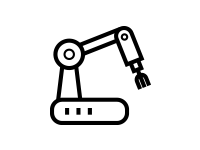Industry Trends
In September 2024, South Korea’s production in all industries moderated (△0.3 percent) as the construction industry remained sluggish (△0.1 percent from the previous quarter), and the mining and manufacturing industry moderated after the big jump in the previous month (△0.2 percent).
| Subject | All industries | Mining & manufacturing |
Service | Retail sales | Capital investment |
Construction completed |
|---|---|---|---|---|---|---|
| Sep. 2024 (% | ∆0.3 | ∆0.2 | ∆0.7 | ∆0.4 | ▲8.4 | ∆0.1 |
In September, a decline in semiconductor and automotive parts production caused mining and manufacturing production to fall (from 4.4 to △0.2 percent), even as the production of major sectors such as automotive (finished vehicles), machinery, and chemical industries increased. The service industry slowed down (from 0.3 to △0.7 percent) after gaining for three months (from June to August 2024) as the easing of the infectious disease epidemic and the heat wave caused a decline in health and welfare, arts, sports, and leisure. Despite a sharp increase in durable goods (6.3 percent), retail sales fell (from 1.7 to △0.4 percent) due to a slowdown of non-durable goods (△2.5 percent) and semi-durable goods (△3.2 percent). Capital investment rebounded significantly, driven by a big jump in machinery (17.0 percent), including semiconductor equipment. The cyclical change in the coincident index declined due to a fall in construction completed and retail sales, while the cyclical change in the leading index—supported by strong domestic shipments of machinery—remained stable even as the term spread narrowed.
The South Korean economy needs to be closely monitored by sector, paying special attention to economic uncertainties. There are external uncertainties such as the US presidential election, the economy of major countries, the situation in the Middle East, and the performance of key industries, as well as difficulties for small businesses and risks to household debt and real estate PF.
※ Source: Ministry of Economy and Finance(moef.go.kr)
Trends by Industry
- Automotive
-
‘Declined for Three Straight Months, Affected by Sluggish Production, Domestic Consumption and Exports’

→ Exports in August decreased by 4.1 percent year-on-year due to lower production volumes caused by wage and collective bargaining agreements and production equipment adjustments. Domestic consumption in July fell by 4.9 percent year-on-year, affected by weaker demands and supply volumes. Production saw a decrease in July due to slower domestic demand and exports and partial labor strikes at some auto makers. Imports spiked by 37.5 percent from a year ago in July, driven by strong imports of eco-friendly cars.
- Shipbuilding
-
‘Significant Improvements in All Key Indices’

→ Key production indicators improved in July, with double-digit increases in production, shipments, and capacity utilization. August exports increased by 80.0 percent from a year ago, led by deliveries of large ships. Imports in July were up 25.3 percent year-on-year as more ships and marine engines were imported. While cumulative global ship orders from January to August increased by 30.3 percent year-on-year on a CGT basis, South Korean shipbuilders selectively received orders and saw their orders increase by 14.5 percent.
- General machinery
-
‘Turned Positive as Strong Domestic Demand Boosted Production’

→ In July, production increased by 5.7 percent year-on-year, driven by strong domestic consumption and exports enabled by gains in domestic shipments and capital investment. Due to slow exports to the United States, August exports fell by 5.9 percent from a year ago despite strong exports to China. Imports in July reversed to a 7.7 percent year-on-year increase as demands from downstream industries recovered.
- Steel
-
‘Production Continued Declining, while Exports Shrunk Due to Falling Unit Prices’

→ July production declined by 4.8 percent year-on-year as sluggish construction, automotive and other industries weakened demands amidst growing exports of steel products. In August, falling export unite prices caused the industry’s exports to decline by 1.7 percent year-on-year even though export volume jumped by more than 10 percent. Imports decreased by 5.6 percent year-on-year in July as domestic demand for steel slowed and import unit prices increased.
- Oil refining
-
‘Amidst Falling Exports and Unit Prices, the Industry Grew by 1.4 Percent Year-on-Year, Driven by Volume Expansion’

→ July production grew by 3.8 percent year-on-year, supported by higher utilization rates at domestic refineries and expanded export volumes. In August, exports increased for the sixth consecutive month, led by volume expansion.
- Wireless communication devices
-
‘August Exports up 50.4 percent Year-on-Year on Rising Global Smartphone Demand’

→ Exports increased by more than 50 percent for the second consecutive month, following a 53.4 percent increase in July, as major domestic and foreign smartphone makers, with plans to launch new products in Q3, increased supply of parts to be used in overseas production bases. In July, production surged by 63.8 percent year-on-year, and shipments jumped by 24.4 percent, while inventories increased by as much as 68.2 percent. Imports of smartphone parts fell by 21.9 percent year-on-year in July, with overall imports down by 4.7 percent from a year ago.
- Semiconductor
-
‘Exports Exceeded USD 11 Billion for Four Straight Months’

→ August exports grew by 38.8 percent year-on-year to reach USD 11.878 billion, which is the largest August exports on record. July's semiconductor production index continued to show strong growth, rising by 22.2 percent year-on-year to 152.4. However, the month-on-month rate turned into an 8.0 percent decline after growing for three straight months since April.
- Display
-
‘August Exports Turned Negative Due to Base Effect and Aggravated Global Competition’

→July production rose by 0.8 percent year-on-year, and the capacity utilization index grew by 4.6 percent year-on-year as the effects of new product launches continued, but the growth slowed. Despite the prolonged effect of new product launches, August exports declined by 4.9 percent year-on-year, affected by strong performance in the same month last year and market share gains by competitors.
* Please note that the latest data available in Statistics Korea are for the previous month in the case of exports and the month prior to the previous one for production.
Please enter the security text below
to prevent email collection
Please check the information of the person in charge.
연구과제 제안이 접수되었습니다.
신청이 접수되었습니다.


View Summary
코로나19 발생 이후 대부분의 고용 관심사가 항공 및 여행서비스, 음식·숙박 서비스 등 주로 서비스 업종에 집중된 상황에서 본 연구는 최근 그 중요성이 강조되고 있는 제조업의 고용변화를 살펴보았다. 분석에 따르면, 코로나19 이후 제조업 고용은 비교적 큰 충격 없이 빠르게 회복하는 모습을 보이고 있다. 제조업 고용은 서비스업에 비해 큰 충격 없이 유지되고 있고, 코로나19 직후 2020년 상반기에 약간 하락하였지만 하반기부터 회복 추세를 보이고 있으며, OECD 주요국의 제조업과 비교하여도 일본과 함께 고용 충격이 비교적 작게 나타나고 있다. 그러나 전반적으로 양호한 고용 성적에도 불구하고 제조업 내 특성 별로는 차이가 나타나는 것으로 보인다. 종사상 지위 별로 보면, 임시·일용직, 고용원이 있는 자영업자에서 고용 충격이 상대적으로 크게 나타났고, 상용직과 고용원이 없는 자영업자는 큰 충격이 없는 것으로 나타났다. 제조업 규모별로는 300인 이상의 경우 코로나 발생 초기 약간의 충격 이후 고용이 빠르게 반등하면서 코로나 이전보다 고용이 더 증가한 반면, 이보다 작은 규모의 제조업체들의 경우 고용 회복이 더디게 나타나고 있다. 고용의 중장기, 단기 추세선을 비교한 결과 제조업 업종에 따른 차이를 보였다. 코로나 발생 이전 3년간의 추세선을 2020년 1월부터 연장한 선과, 2020년 1월부터의 실제 자료를 이용한 단기 추세선을 비교한 결과, 의약품은 코로나19 발생 이전부터 시작하여 코로나19 발생 이후에도 견조한 증가세를 유지하고 있으며, 전자부품·컴퓨터, 기타운송장비, 가구는 코로나19 이후 오히려 고용 추세가 개선되었다. 그러나 다수 업종은 코로나 발생 이후 고용이 하락하였는데, 특히, 비금속광물, 1차금속, 금속가공 분야나 인쇄·기록매체 업종에서 하락이 상대적으로 크게 나타났다.
The following information is provided.
inform@kiet.re.krPlease complete the CAPTCHA below.
[전지적키에트시점] (Eng sub)심상치 않은
국내 대기업 움직임??
KIET 시점에서 보는 미래 로봇 산업 전망은
어떨까요?
경제전문가가 알려드립니다!
(산업연구원 박상수 실장)


